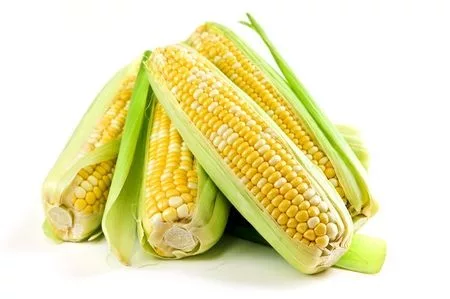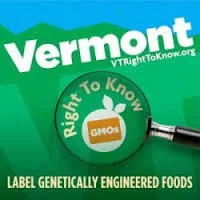GMO Testing, Traceability and the Vermont Labeling Law

Supply Chain Impact of Vermont’s Consumer Protection Rule
Vermont contributes to globally emergent food laws aimed at improving supply chain transparency with Act 120 requiring the labeling of food produced entirely or in part with genetic engineering. While the controversial law is only applicable to retail food sold and distributed in the state of Vermont, it is encouraging manufacturers to verify and label all at-risk products distributed and sold within the U.S. due to complex supply chains, which cannot always guarantee the final destination. This new law (effective July 1, 2016), along with similar legislation in the European Union (EU) and numerous other countries, strives to provide consumers with increased knowledge about the products they eat.
GMO Testing Verifies Label Claims
Genetically modified organism (GMO) testing is a practical and effective tool commonly used in identity preservation (IP) and regulatory labeling programs to verify the accuracy of non-GMO label claims. As such, it is an advantageous mechanism to support growers, suppliers, buyers and manufacturers in verifying GMO content for accurate labeling under the Vermont law.
Quantitative real-time polymerase chain reaction (qPCR) is the leading analytical method for GMO testing due to the assay’s sensitivity and accuracy in determining GMO content across food matrices. Real-time PCR works by amplifying DNA in the sample product. Therefore, the accuracy of the test—and accuracy in labeling—relies on two core criteria: intact DNA and primer specificity.
Meaningful results are dependent upon intact species DNA, which may be degraded in highly processed foods. Where degradation occurs, PCR must be performed on a less processed or original form of the material to utilize intact DNA for amplification. Additionally, PCR primers must be appropriate for the GMO species and not exhibit cross-reactivity to ensure accurate and repeatable detection.
Genetic ID, the first commercial laboratory to offer GMO testing by PCR in North America, has a 20-year history working with growers, suppliers, manufacturers and exporters to achieve accuracy and reliability in accredited GMO testing. Genetic ID expertly understands the capabilities of the assay and tailors test design to specific business objectives to support the food industry in due diligence, brand protection and compliance with the Vermont labeling law.
Compliance and Brand Protection
Complying with the 0.9 percent GMO threshold of Vermont’s labeling law should seem familiar to those exporting to the EU and regulated by (EC) No. 1829/2003. However, food businesses should take note that the Vermont law applies the GMO threshold to the total dry weight of the final product, rather than to individual ingredients as directed by the EU.
Other key compliance aspects of the Vermont law stem from packaged food disclosures relating to GMO content. Non-exempt foods produced or at risk from genetic engineering (GE) shall be labeled accordingly as “Produced with Genetic Engineering,” “Partially Produced with Genetic Engineering” or “May be Produced with Genetic Engineering.” The former is applicable to raw agricultural commodities produced from a GE variant whereas the partially produced label is for use with processed foods containing more than 0.9 percent but less than 75 percent GMO on a dry weight basis. Most importantly, the latter disclosure is only applicable where the manufacturer does not know the GMO status of a product after reasonable inquiry.
Looking for quick answers on food safety topics?
Try Ask FSM, our new smart AI search tool.
Ask FSM →
Suppliers and manufacturers preparing to comply with the Vermont law should consider a simple, four-step approach to meet the regulation and maintain continued compliance.
Step 1: Determine Materials At Risk from Genetic Engineering
Genetically engineered food refers to raw materials or their derivatives whose genetic material is changed through recombinant DNA technology or other in vitro nucleic acid techniques, overriding the natural biological mechanisms of the species (i.e., crop). Commercially available GE crops (also referred to as GMOs) include: alfalfa, canola, corn, cotton, papaya, soybeans, sugar beets, yellow summer squash and zucchini.
Suppliers and manufacturers should identify all at-risk food products that potentially contain GE crops and their derivatives. Alcohol, animal feed, dietary supplements, foods made with GE processing aids or enzymes, and foods derived entirely from animal products or requiring U.S. Department of Agriculture (USDA) label approval are exempt from labeling.
Step 2: Independent Verification and Sworn Statements
Labeling may be avoided for at-risk products if they are independently verified by an approved scheme or accompanied by a sworn statement from the supplier confirming the absence of GMO content. Approved verification schemes include the USDA organic program, Non-GMO Project and Non-GMO True North Standard. GMO testing can serve to validate and verify the integrity of sworn statements to ensure compliance with the law, support traceability documentation and maintain brand protection.
Step 3: Determine GMO Content on a Dry Weight Basis
Where the finished product is at risk for containing GE material and sworn statements or non-GMO certification are not available, test the product or source material to determine GMO content. The percentage of GE material in the final product must be calculated on a dry weight basis (i.e., without weight from water and salt).
Step 4: Label and Verify by July 1, 2016
Foods above the 0.9 percent GMO threshold produced after July 1, 2016 and available for retail sale in the state of Vermont must be labeled according to the regulation. Affected food products manufactured prior to the July 1 effective date, but available for retail sale until January 1, 2017, do not require labeling. However, products remaining on the shelf after the January 1 extension are subject to labeling as if they were produced after July 1, 2016.
For continued compliance, maintain a robust traceability system linking external traceability to internal traceability for at-risk products. Ensure recordkeeping of IP certification, sworn statements, testing and related verification documents for a minimum of 3 years.
Lori Carlson is a freelance writer and food industry consultant. Heather Secrist is CEO of Genetic ID, an ISO 17025-accredited laboratory with 20 years of experience in GMO testing.








